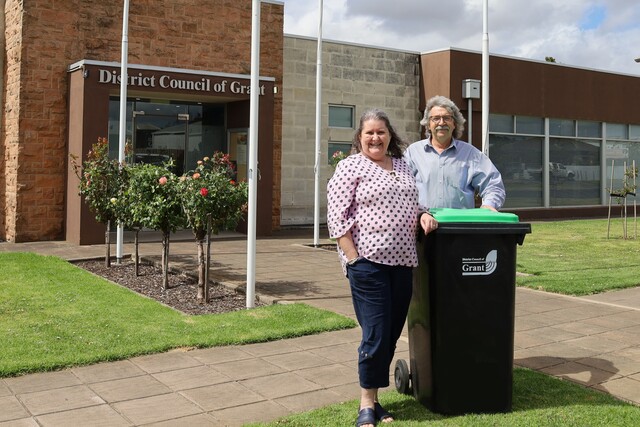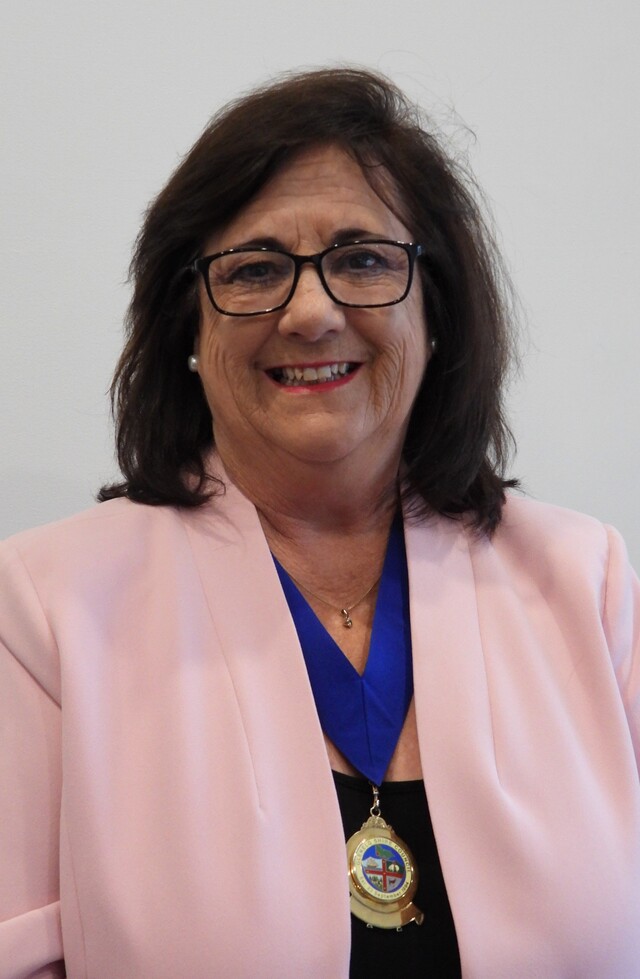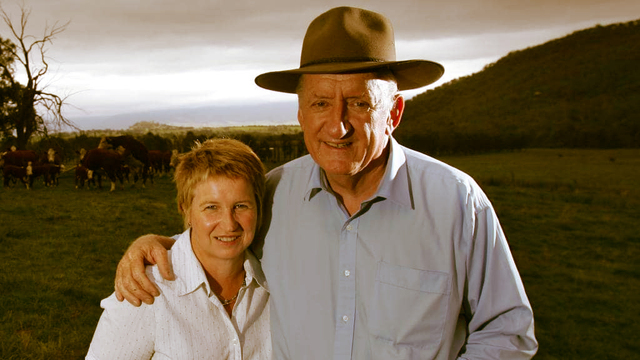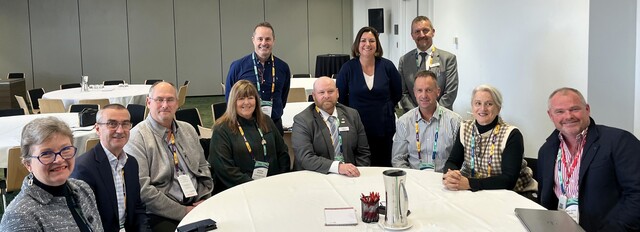Mayor Bertrand Cadart, Glamorgan Spring Bay Council, Tasmania
Q. How long have you been on Council?
I was elected, last on the post, for a two year term in 2005. In 2007, I sought a second term as a Councillor and was elected with flying colours, this time for a full four year term. I was also elected Mayor for a normal two year term, by the slimmest margin, with only two votes above the score of my nearest rival. I learnt that day that indeed ‘every vote counts’!
Q. Why did you become involved in Local Government?
Out of general frustration and aggravation – I was confronted with the inability of the local Council to solve the problem of rampant parochialism following an amalgamation 14 years prior. My dream was (and still is) to bring the residents from both municipalities (Glamorgan and Spring Bay) to, at long last, start a process of social harmony. Numerous residents, especially newcomers like myself, pushed me to ‘have a go’, arguing that doing a worse job could simply not be possible. I had no previous experience in local politics and my very first attendance at a Council meeting was my first one as a Councillor.
Q. Tell us about your Local Government area.
Glamorgan Spring Bay Council evolved from the 1993 Local Government amalgamations. The original Glamorgan and Spring Bay Councils are the two oldest rural Councils in Australia, having both been proclaimed in 1860. Our municipal area covers in excess of 2,500 square kilometres and has a population of approximately 4,220 people, which can more than double during the summer months.
Glamorgan Spring Bay is an exciting place to work, rest or play. Please come and visit us one day and visit our tourism website at www.freycinetcoast.com.au
Q. What issues are important to you?
Since being elected, I have realised that the issues important to me are not necessarily the most pressing ones. After seven years of drought, Glamorgan Spring Bay is facing severe and acute problems of lack of water across our entire area. I had other ‘ideals’ and priorities in my mind and my heart, but have been dedicating nearly all of my time, energy and resourcefulness to finding acceptable solutions to provide adequate supply of water for residents. Unfortunately this extraordinary situation and the legacy left by previous local administrations has forced me to be a reactive Mayor, rather than the proactive one I wish I could be.
Q. What innovative projects is your Council working on?
Council is working hard to share resources with other Tasmanian Councils, to ensure its economic survival, while avoiding forced, socially unworkable and unwanted amalgamations. We are great believers in a Chinese proverb that says, ‘When working together, men can not only move mountains, but these mountains become mountains of gold’. Traditionally, Tasmanian Councils have been deeply parochial, probably due to insularity. We are working toward a more regional approach, as if we don’t, forced amalgamation will be inevitable, bringing a cortege of social difficulties that will take at least two generations to get over.
Q. What has been your greatest achievement on Council?
Using a motor scooter as my Mayoral vehicle. Not only is the scooter extremely economical and fantastically environmentally friendly, but it has attracted attention throughout Tasmania, the whole of Australia and the international scene. This has put our sleepy municipality on the map of the world at no cost to Council. It is the best and cheapest advertising campaign I have ever developed in my life.
Q. What is the best part of being a Mayor?
I am 60 years of age this year and I have faced many challenges during my incredibly adventurous and tumultuous life. Being a Mayor is the greatest challenge I have ever faced. I never knew how difficult it was to please all people, all of the time. Of course I have very quickly discovered that it is not possible, but this has got to be the best part of being the Mayor – stretch your patience, fortitude and serenity to the very limit!
Alderman Rosemary Armitage, Deputy Mayor, Launceston City Council, Tasmania
Q. How long have you been on Council?
I have been on Council for two and a half years and enjoy it immensely. It provides a great deal of satisfaction to be able to contribute to one’s community.
Q. Why did you become involved in Local Government?
I was concerned with a number of issues in the area in which I lived and believed the only way to make changes was to become a decision maker and be responsible for community concerns. Rather than complain, I prefer to get in and make a difference.
Q. Tell us about your Local Government area.
Launceston is Australia’s third oldest city. It was proclaimed a municipality in 1852 and declared a City in 1888. Council has a population of over 65,000 and is served by 12 Aldermen and 570 employees. With an area of 1,405 square kilometres, Launceston has the charm and pace of a regional centre, but with facilities you would find in a much larger city, such as the renowned Queen Victoria Museum and Art Gallery. Launceston provides graceful Georgian and Victorian streetscapes and parks, and we have the largest collection of 19th century buildings in Australia.
Q. What issues are important to you?
The wellbeing and social inclusion of our community is paramount to me. I would also like to see our youth more valued in the community and for them to have a greater sense of worth, as they are our future. I am very concerned with our ailing health system, our flood protection, and an ageing population being faced with ever increasing rates. I also believe we must protect Launceston’s heritage and icons such as our beautiful Cataract Gorge.
Q. What challenges are facing your Council?
Because of Launceston’s topography, Council faces major challenges with air quality, particularly during winter when the smoke from wood heaters hangs over the City, creating a potential health hazard. To confront this serious issue, Council began a Wood Heater Replacement Program in partnership with the Federal Government. The program offers a $500 grant to householders to replace their wood heaters with a cleaner form of heating. Since the program began in 2001, thousands of wood heaters have been removed and we have experienced a dramatic improvement in air quality.
In 2000 Launceston
exceeded the national standard for air quality 38 times. However, by 2006, the number steadily dropped to six times.
Q. What innovative projects is your Council working on?
Phenomena Factory is Australia’s newest and most exciting interactive science centre, having opened at Council’s Queen Victoria Museum and Art Gallery at Inveresk on 1 May. Phenomena Factory is designed to encourage the community to explore and engage with science and technology by providing free, hands on science education for people of all ages. The centre includes over 30 permanent exhibits, with regularly changing programs and displays.
Q. What has been your greatest achievement on Council?
My greatest achievement is being able to assist those in the community with problems that are of concern to them, whether great or small. I also derive a great deal of satisfaction in being able to address community concerns and assist those less able. I believe in standing up for what is right and never being afraid to speak out.
Q. What are the key aspects of being a good Councillor?
I believe it is essential to be a team player and work together for the good of the community. We must always listen and respect the opinions of others. It is imperative to be available to the community, approachable and willing to listen to concerns. Also be prepared to learn and grow and have a good knowledge of the Local Government Act, regulations and requirements.







